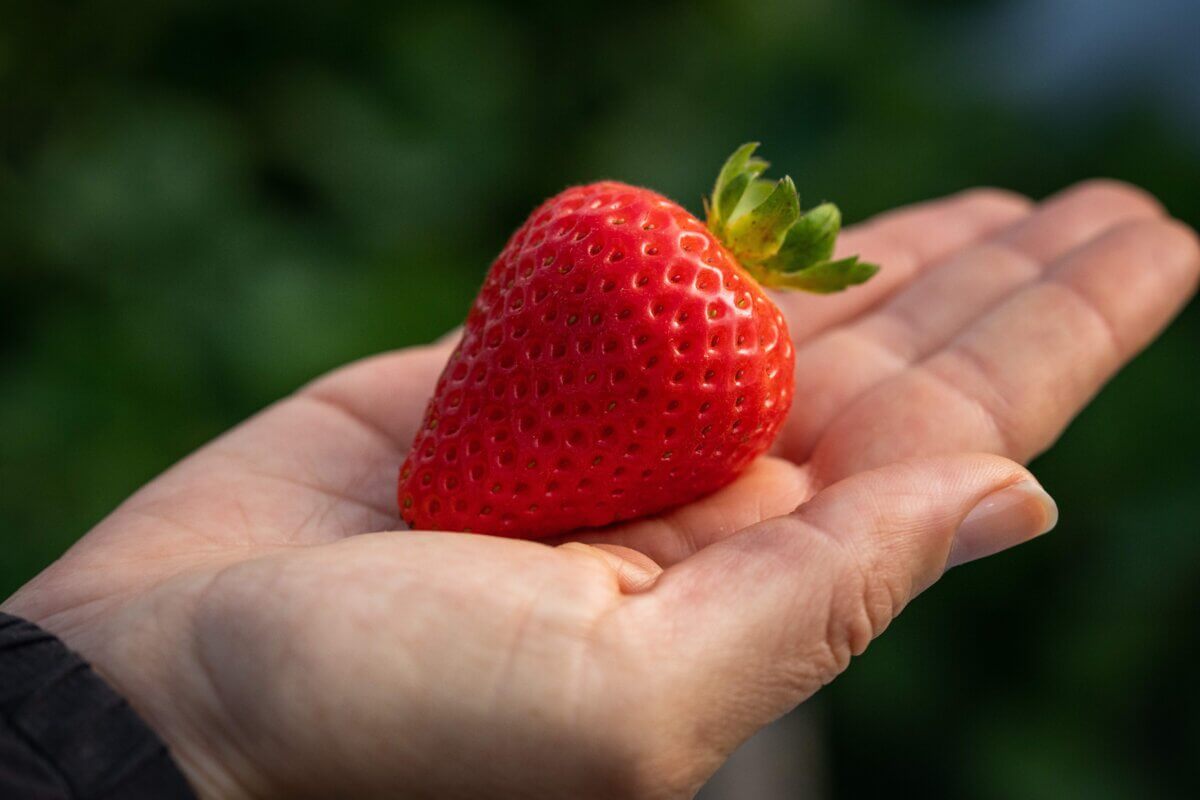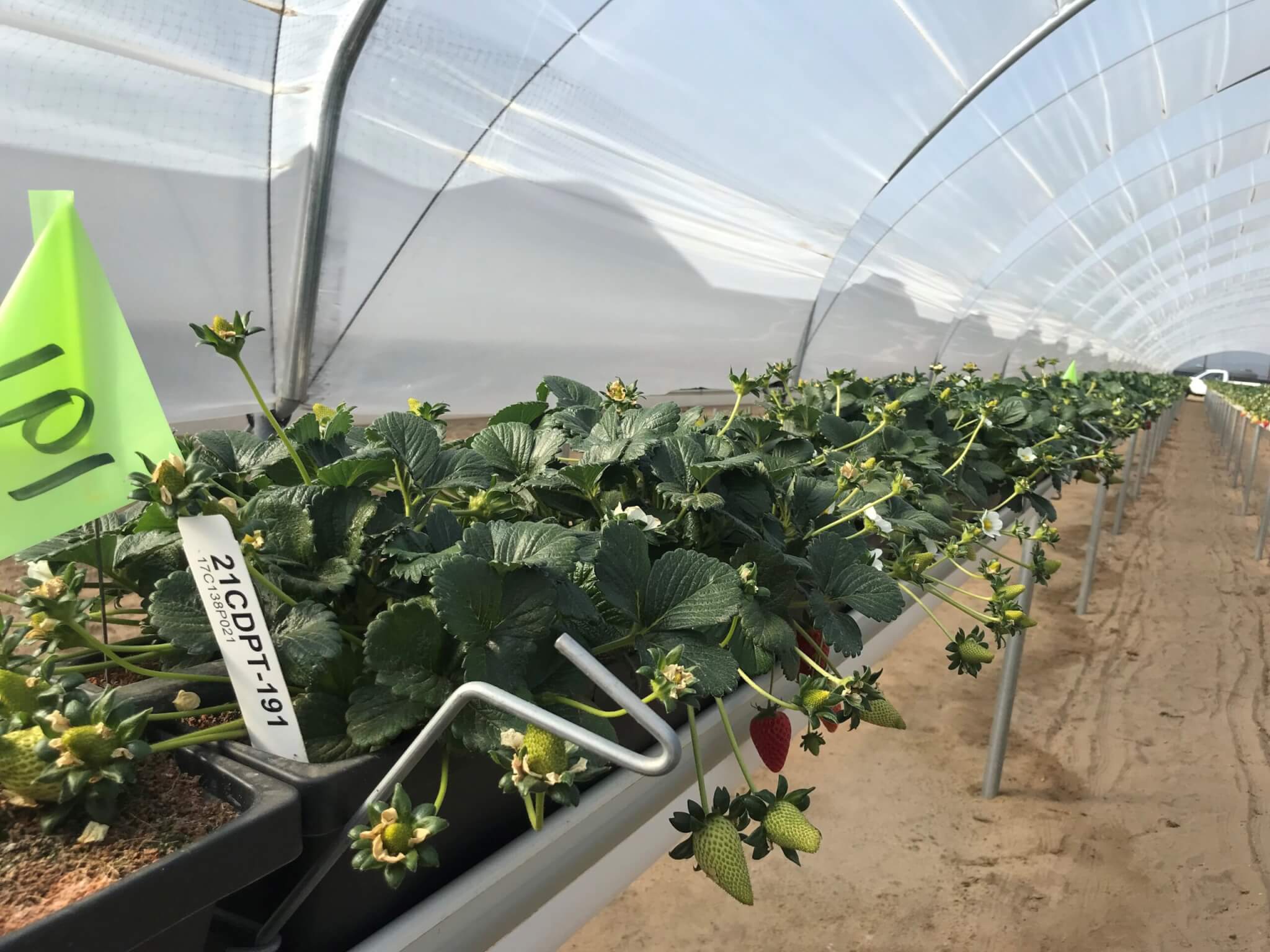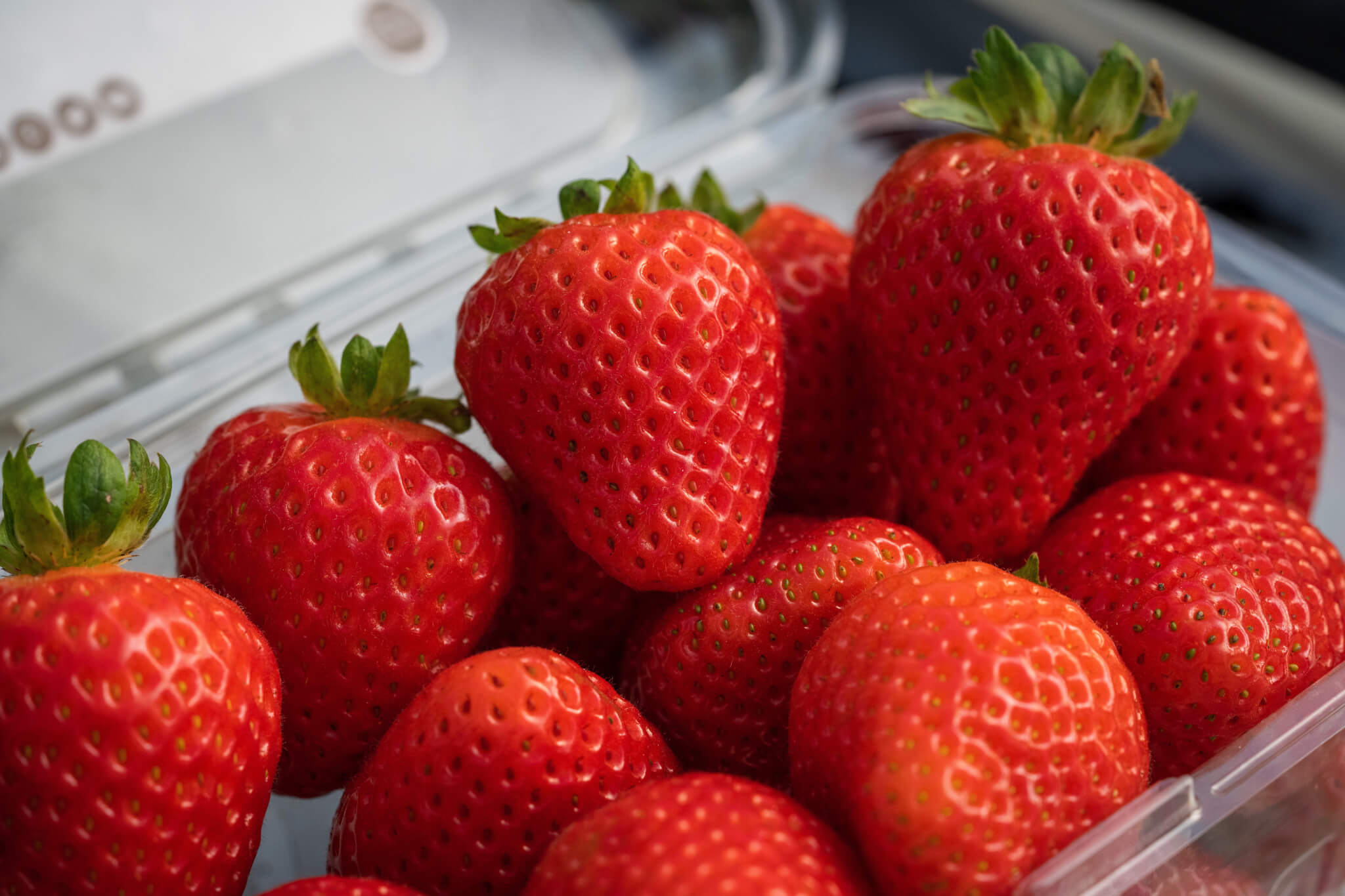
UC Eclipse strawberry is one of the new varieties resistant to Fusarium Wilt. (Credit: Jael Mackendorf / UC Davis)
DAVIS, Calif. — Scientists at the University of California-Davis are developing five strawberry varieties resistant to Fusarium wilt, a deadly fungal disease with no cure. The new strawberries could be huge for farmers who frequently lose portions of their crops to the disease.
Nearly 90% of strawberries sold around the U.S. are grown in California. But the parasitic Fusarium wilt is one of the most common reasons for crop loss and death, making it difficult for growers to produce a consistent supply. Unfortunately, over half of strawberries planted in the state since 2014 haven’t been resistant to it, according to UC Davis. For the first time, the university Strawberry Breeding Program has released varieties that are, and have the potential to replace commercial plants out there that aren’t.
“These provide the same yield or better and they are Fusarium resistant,” says Steve Knapp, a Distinguished Professor in the Department of Plant Sciences and director of the UC Davis Strawberry Breeding Program, in a media release. “They have a better collection of traits. They’re superior.”
It wasn’t until 2005 that the wilt started to become a problem for strawberries. It was that year that methyl bromide, a fumigant and pesticide, stopped being used in the United States. The bacteria lied in the soil, and around a year later, cases started to emerge and increase over time, leading those in agriculture to worry that their strawberries might be destroyed.

“The disease has taken off fast and we need to react quickly to address the need,” explains Glenn Cole, a breeder and field manager with the Strawberry Breeding Program.
The team obtained DNA from thousands of plants and developed genetic tools to screen and identify genes resistant to Fusarium. By having a greater genetic understanding of a wide variety of plants, the team was able to make resistant strawberries in a much more efficient way than ever before.
The newly-developed strawberries are not only resistant to the pathogen, but have better flavor and are able to withstand being grown year-round. Eclipse, a “summer plant” berry, has the potential to increase profits because it can be produced in fall and winter, yielding 54% more than similar plants.
“We expect this cultivar to have wide commercial appeal,” Knapp says. “Eclipse is going to eclipse them all.”

The summer plant also boasts a long shelf-life, as do UC Surfline plants. The latter, along with the UC Monarch variety, are referred to as “short-day” plants, which are even resistant to other pathogens like Verticillium wilt and Phytophthora crown rot as well.
This mechanical engineering breakthrough is great for consumers, growers, and scientists alike, and hopefully can be applied to the wide-scale soon enough.
“These tools have allowed us to sweep out the susceptibility and bring in resistance,” Knapp concludes.









